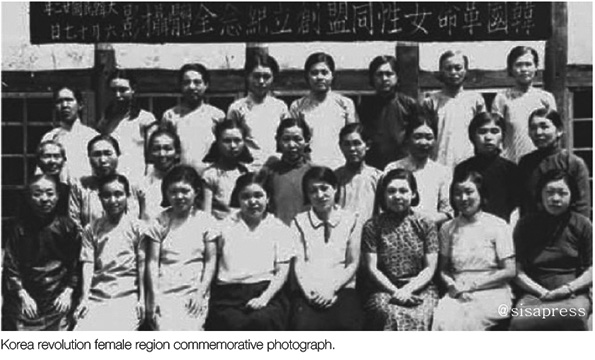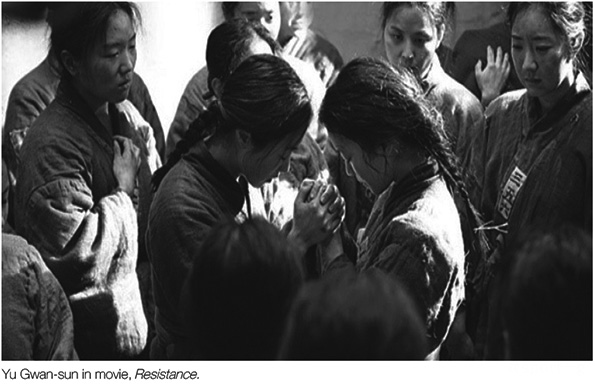
March 1st, 1919, was the day when 33 Korean leaders wrote the Declaration of Independence and resisted against Japanese imperialist colonization. It is called Independence Movement Day. Last March 1st, 2019, marked the 100th anniversary of Independence Movement Day, and last April 11th, 2019, marked the 100th anniversary of the establishment of a provisional government.
Marking the 100th anniversary of Independence Movement Day, there is one crucial thing that has attracted the public’s attention. This is the movie named Resistance, which is the story of Yu Gwan-sun, who was a famous Korean female independence fighter. Yu Gwan-sun is well-known as an independence fighter, but most people don’t know why she started to fight for her country or how she lived. This movie provided a lot of information about her, and many people who watch this movie will learn about her. However, there are a lot of female independence fighters other than Yu Gwan-sun. Despite their sacrifices, they are not well known as independence fighters.
In fact, there were so many female independence fighters. Most of their missions were as supporting roles such as providing goods or making uniforms. These missions usually were not documented. Therefore, female independence fighters are usually less known than male independence fighters who fought at the frontlines of wars. However, these missions were also as important as fighting against invaders. Therefore, CBT researched some other female independence fighters.
One fighter was Maria Jo. Most Koreans may know about Ahn Jung-geun. His great deed was the assassination of Ito Hirobumi in Harbin, and it was one of the more famous deeds during the independence movement in Korea. Maria Jo was his mother. She and her children, including Ahn Jung-geun, were also independence fighters. Maria Jo supported her children’s actions actively and helped support government bonds by donating her estate. There is a sad story about Maria Jo and her son. When Ahn Jung-geun faced the death penalty, she sent a shroud with a letter inside to him. This is the content of the letter: “Keep your creed and die. The punishment that you are sentenced to originated from righteous activities, so don’t subsist poorly and die for a great cause. These are my final duties as a mother. This letter will be the last thing for you. I attached a shroud for you, so you can die with this. I don’t expect to meet you again. In your next life, please be born to good and rich parents.” After the death of her son, she moved to Shanghai and helped independence fighters economically by establishing a provisional economic support council.
Another female independence fighter was Nam Sung-hyun. Her story was made into a movie. The movie is Assassination. In the movie, the famous actor Jun Ji-hyun portrayed her. She fought against the Japanese army. After she lost her husband in a battle with Japan, she moved to Manchuria and started an independence movement. She was often called the female Ahn Jung-geun because she also signed her name in blood and her methods during the independence movement were just like his. She supported independence organizations, and in 1926, she planned to assassinate Saito Makoto, who was the governor of Japan. However, this plan was foiled because the enemy guards were reinforced after Song Hak-sun’s deeds. After that, she planned to assassinate Muto Nobuyoshi, who was the Japanese ambassador, in 1933. However, before she carried out the assassination, she was found out by the Japanese army and was imprisoned. Because of the tough torture and her hunger strike, her lifespan was shortened drastically, and she passed away just 5 days after she got out of prison. She realized her life would end, so she left a testament: “Life and death don’t depend on eating, but on thinking. Independence comes true by spirit.” She always struggled for independence until she died. She was a real patriot of Korea.
Another fighter was Jung Jung-hwa, who had the nickname “Korea’s Joan of Arc.” She supported independence fighters who fought for the nation. She was born to a wealthy family, and she fought for her country with her husband and her father-in-law. After Independence Movement Day, she went to Shanghai as an exile. Then, she started her own independence movement in earnest by pooling money from back home and from Shanghai. She also taught Korean language and history to children, and she was the leader of the Korean Women’s Patriotic Association, which helped many women gather and fight for their country too. She fought for 27 years, and she was awarded the Order of Merit by the National Foundation.
Jung Jung-hwa once said, “The reason that I joined the independence movement was not special. However, the provisional government, which is the symbol of our people, gave me some missions and I just followed orders. I wasn’t able to ignore or neglect my duty. The people who trusted me with the orders just knew my personality.” She said that her 27 years of great work was just a personal determination. She was so humble, and she did her duty for her entire life. She was literally an independence fighter with humanity and talent.
After liberation, the Anti-Nationality Investigation Committee failed to punish pro-Japanese group so the phrase “Three generations of independence fighting families would perish” realized these days. However, the Korean people must fix this problem. The government and the people should research more about these fighters, recover their honor and pay respect to the descendants of those warriors. The researchers should especially research the female fighters who were overlooked because of their gender. That way, Korea’s history can be recorded accurately. The Independence Hall’s Jung Pil Won, a researcher who published the Korean Independency Movement Biographical Dictionary, suggested, “Until now, the Ministry of Patriots and Veterans Affairs awarded badges to 14,329 independence fighters. Female fighters numbered only 272, and they are only 1.9% of the total. Their duties were carrying munitions and money, delivering weapons and making military uniforms secretly. These actions were not recorded in documents, so their actions are hidden. Thankfully, the government excavated and enhanced the position of female fighters recently. However, there are many fighters who haven’t yet been identified. For them, Koreans must focus on this issue more.”
Today, Koreans live in the Republic of Korea. This independent country and this moment now was created by many independence fighters. They sacrificed themselves for this future that we live in. This Independence Movement Day marks the 100th anniversary. Think about them and their perseverance.
By Bang Ui-hwan | janas@cbnu.ac.kr
By Lim Chae-won | cw39@cbnu.ac.kr


 All
All Feature
Feature






 Bang Ui-hwan&Lim Chae-won
Bang Ui-hwan&Lim Chae-won











